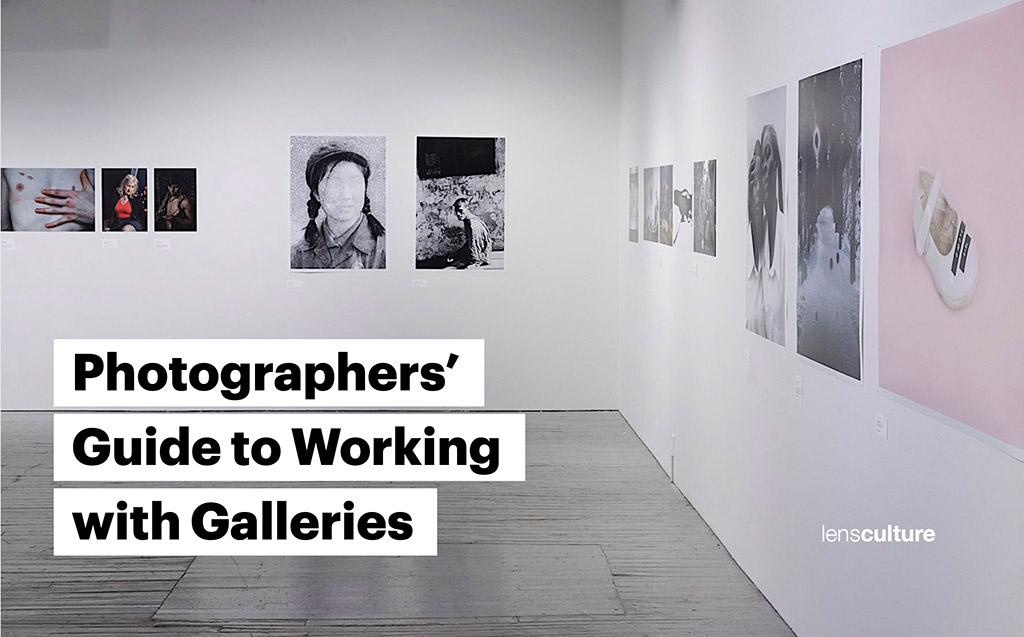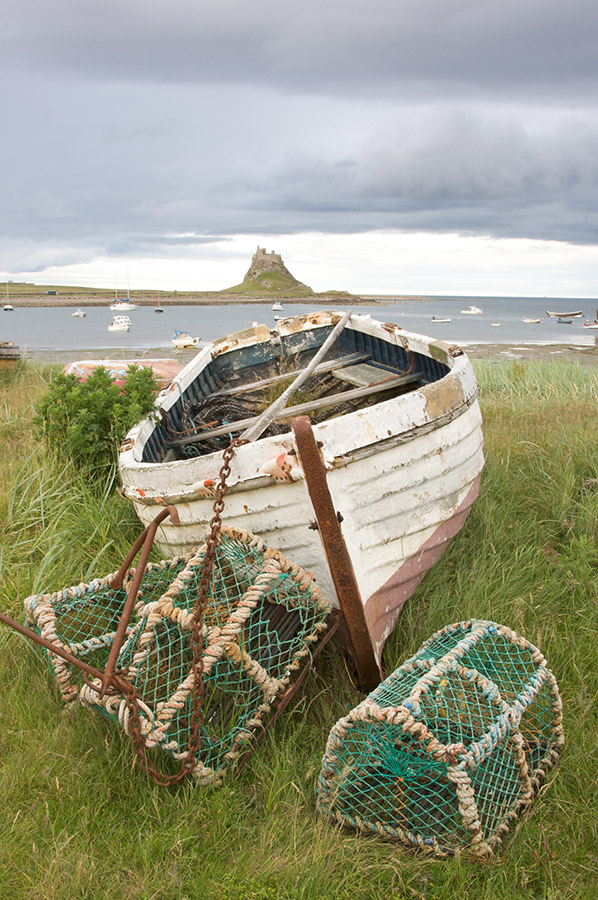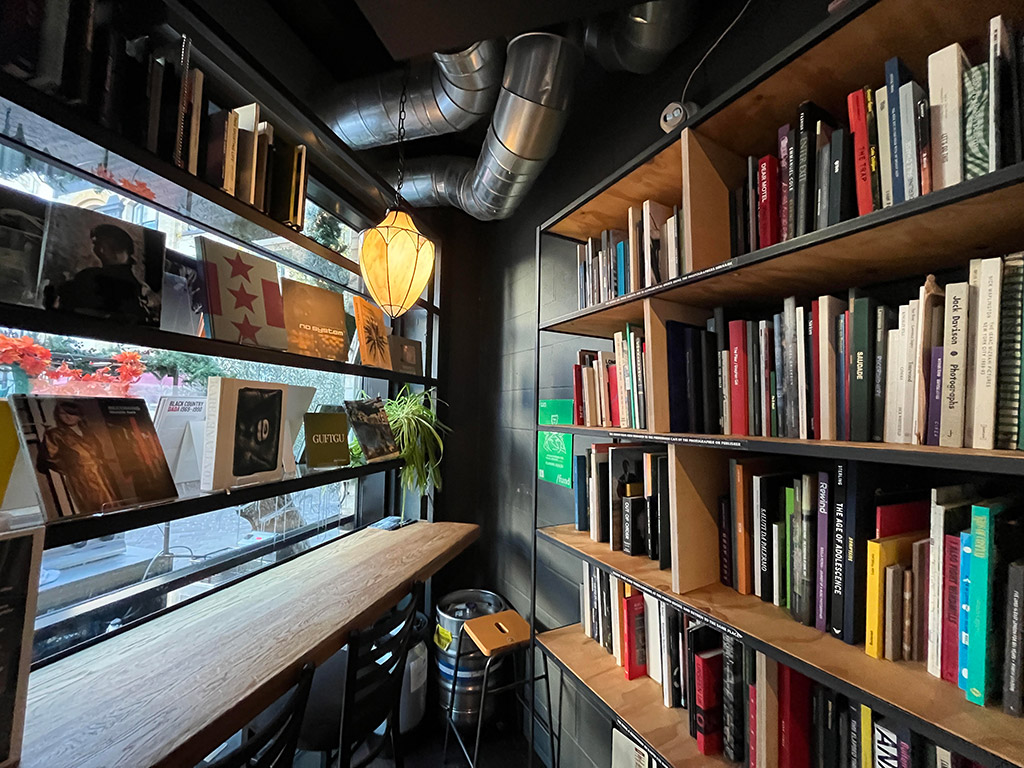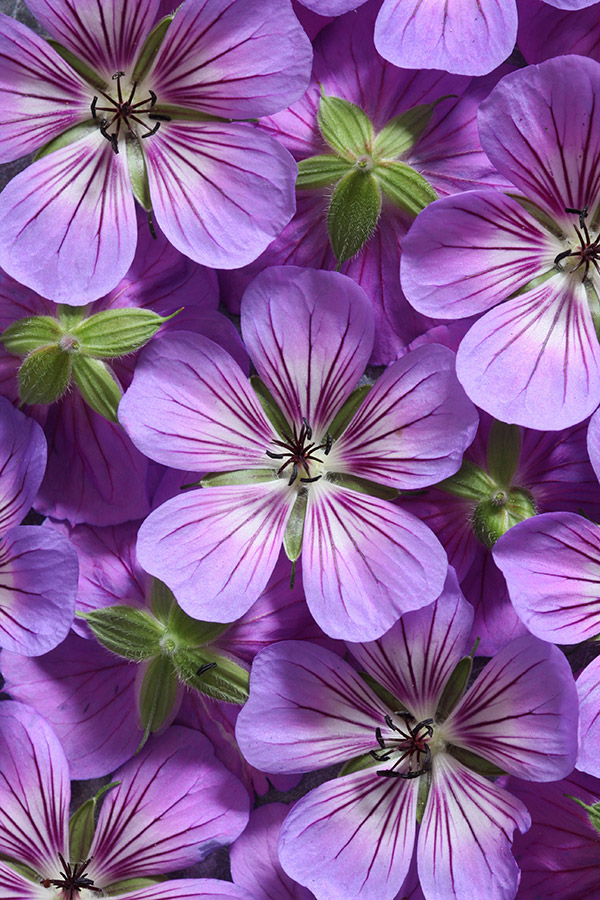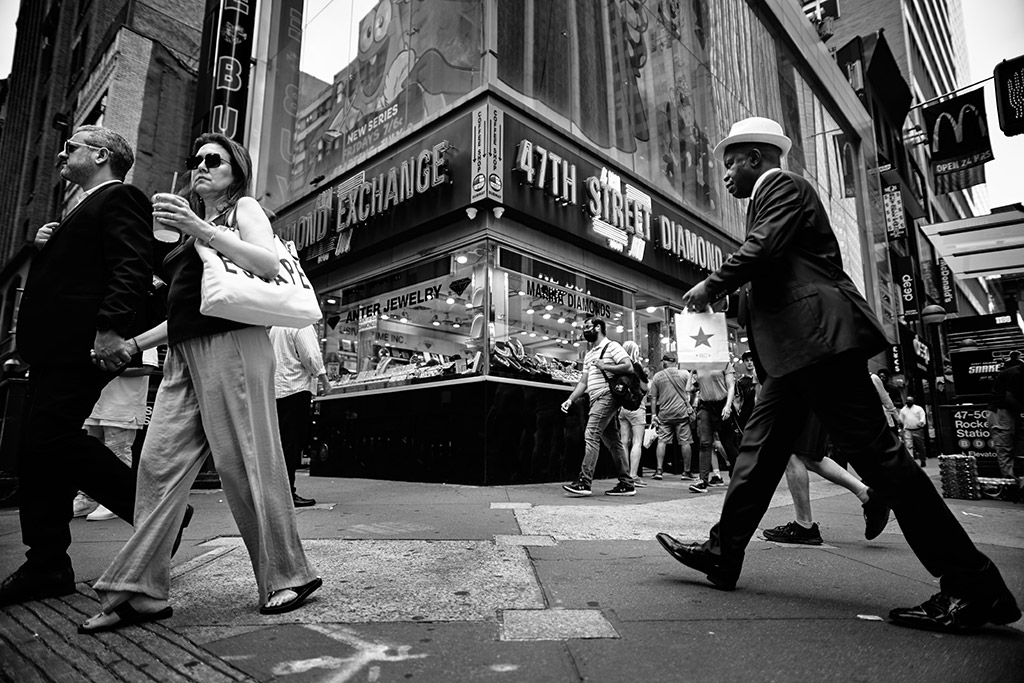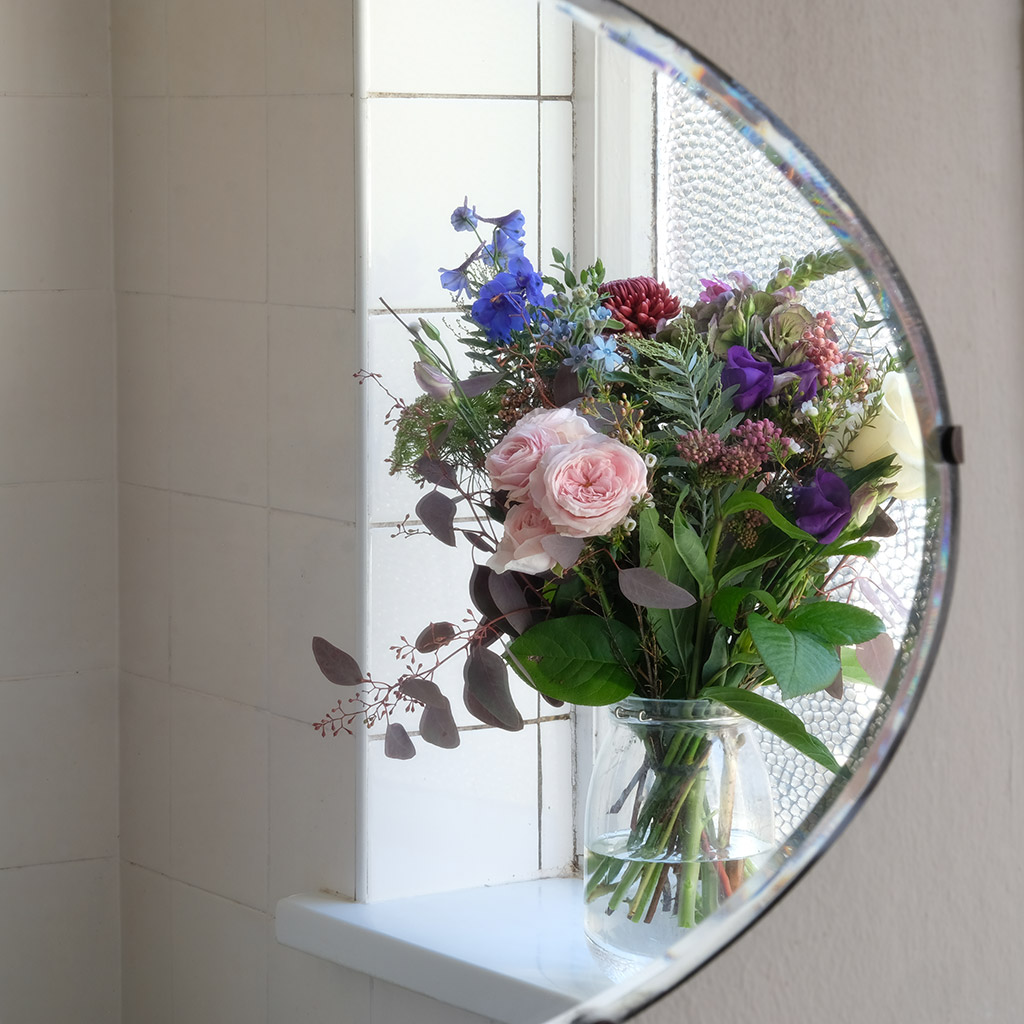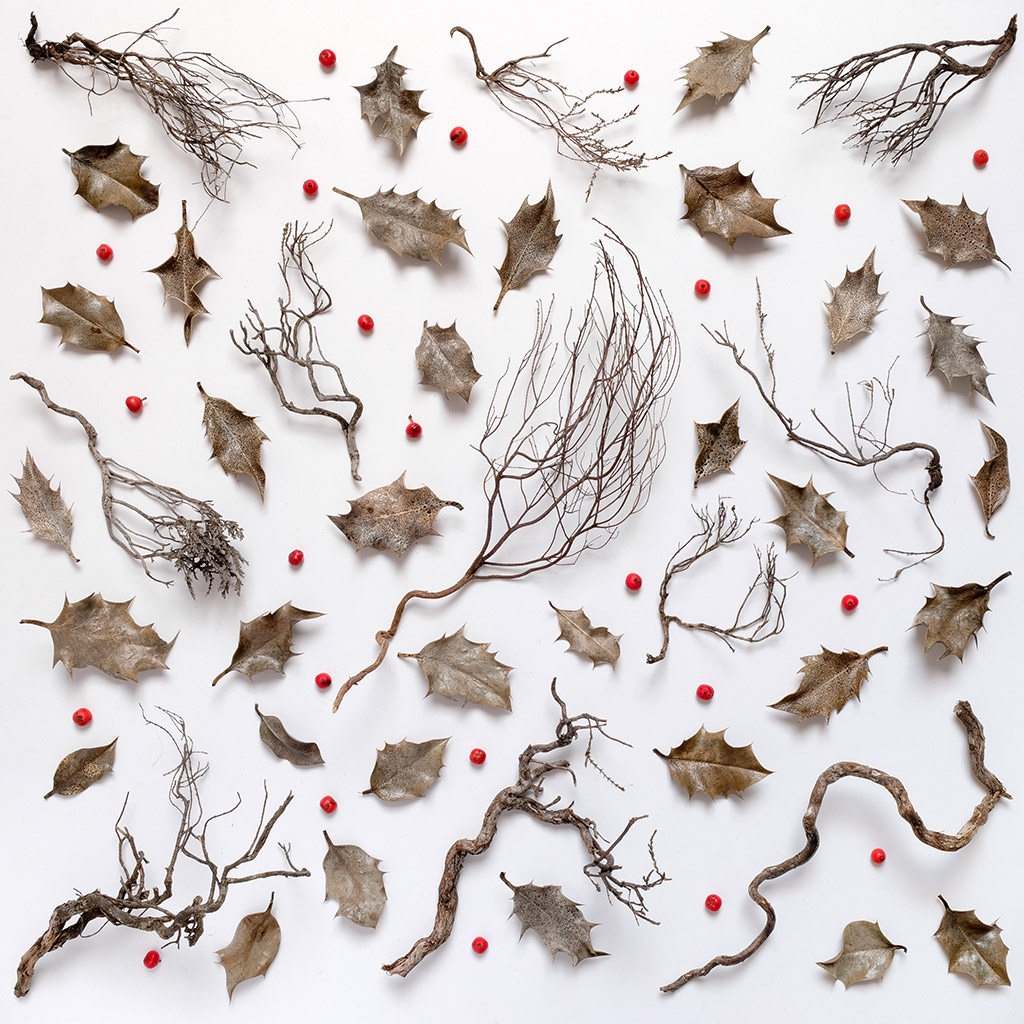When money is tight it’s tempting to pack away your camera, but don’t fret because there are plenty of low cost (and free) UK attractions and handy resources available like photography books, competitions and ideas to fuel your creativity without breaking the bank. Tracy Calder chooses 50 of her favourites to help you decide what to photograph this year.
Low-cost activities and inspiration for photographers
Look to the sky
- www.rmg.co.uk
- £10 (adult entry to exhibition)
Every year the National Maritime Museum in London plays host to some of the world’s greatest space photography, from glittering stars to shimmering galaxies and fiery suns, thanks to entrants to the Astronomy Photographer of the Year competition. This year’s exhibition runs until Aug/Sept and is sure to whet your appetite for astrophotography. If you would like to take things further, order a copy of the 2024 Guide to the Night Sky by Storm Dunlop and Wil Tirion.
Meet the dragon
- www.visitlondon.com
- Free
Celebrate the year of the dragon by joining Chinese New Year celebrations across the UK. Manchester, Belfast and London are just three of the cities hosting events, with colourful parades, lanterns, live performances and traditional food on offer. In London, more than 50 teams take part in a vibrant Chinese New Year parade, which is often followed by firecrackers, speeches and a Lions’ Eye-Dotting Ceremony.
Join the theatre
- Free
Recognised as one of the top 10 free festivals in the UK by The Guardian, SO Festival brings street theatre and outdoor arts to Skegness and Mablethorpe. This year’s event will be held in June and is sure to offer a curated mix of home-grown and international talent. Last year’s festival featured puppets, dancing, installations and circus workshops so there’s sure to be plenty to keep your shutter firing. Other notable outdoor festivals include the Hat Fair in Winchester, parts of Brighton Festival & Fringe and the Festival of Fools in Belfast.
Hit the streets
- Free
Many cities in the UK have fine examples of street art (designs painted with permission), which can serve as wonderful backdrops for portraits, fashion shoots or even make great subjects in their own right. Brighton & Hove, for example, has an international reputation for its street art, while Bristol has designs by world-famous artist Banksy (you can even go on a self-guided walking tour to spot his work)
Meanwhile, London is home to Wood Street Walls – a team who donate time, materials and income to create free artwork in a number of formats. You can download a map of WSW art and take a walk around Walthamstow to see its art.
Take the train
- Free
Home to locomotives in tip-top condition, the National Railway Museum in York is the perfect place for close-up and wider views of some of the world’s finest trains. Star objects include the world’s fastest steam locomotive (the Mallard), a first-generation 1960s bullet train (the Shinkansen) and a beautifully preserved example of the high-speed train that blazed a trail in 1976 (the Intercity 125). This year sees the opening of a number of temporary exhibitions and the return of the Young Railway Photographer of the Year competition.
Grow your own
- From £5
The National Garden Scheme (NGS) allows visitors to access more than 3,500 private gardens in England, Wales, Northern Ireland and the Channel Islands, raising money for nursing and health charities through admissions and the sale of teas and cakes.
You can search gardens by type or via the Find a Garden option on the website. Gardens are open for a small fee (most allow photography, but those that don’t usually display a notice at the entrance). Virtual tours of some gardens can be viewed online so you can check out photo opportunities before you go.
Celebrate our heritage
Every September hundreds of historic monuments and buildings (many of them often closed to the public) throw open their doors. In the past, prisons, archives, inland waterways and churches have all been explored, helping people discover the diverse and rich cultural heritage of England and its communities. The event is England’s contribution to the European Heritage Days festival, established in 1994.
Into the wild
- From free (although donations are welcome)
The Wildlife Trusts is a movement of 46 independent charities, all sharing the same mission: to bring wildlife back, empower people to take meaningful action and to create an inclusive society where nature matters. You can do your bit by donating, volunteering, taking part in a citizen science project or becoming a member. There are more than 2,300 reserves supported by The Wildlife Trusts.
Fly high
- Free
Spanning two days in July, the Wales Airshow offers spectators the chance to see aerobatic displays, state-of-the-art aircraft and amazing ground displays, for free! The grand sweep of Swansea Bay provides a picturesque backdrop for the event. Last year’s highlights included a display by the RAF Red Arrows, a Battle of Britain Memorial Flight and some wing walkers. You can get a display timetable by downloading the Wales Airshow app (£1.99).
Up and away
- Free (but car parking must be paid for in advance)
It’s a thrill to see a hot-air balloon drift across the landscape, but if you attend a festival celebrating these flame-filled craft you are much more likely to achieve a frame-filling shot. The Bristol International Balloon Fiesta (held in August) is one of the most popular of its kind. While morning ascents are popular, the event also offers evening events and a night glow (where balloons fire up in time to music).
Podcasts, book and creative communities for photographers
Save the silver
- £10.95
- www.hoxtonminipress.com
A day out in London can be pricey: the cost of Tube fares, coffee, cakes and attractions all add up, and that’s before you factor in the price of getting there! Thankfully, Emma Watts has teamed up with the wonderful people at Hoxton Mini Press to create An Opinionated Guide to Free London, featuring everything from sky-high gardens to picturesque canal walks, photogenic markets and inspiring lectures – none of which will cost you a penny.
Follow the news
- Free
Reading a regular newsletter featuring recommendations, tips and observations can serve as creative rocket fuel. In recent years I’ve learnt so much from the scribblings of Austin Kleon, McKinley Valentine and David duChemin. To keep on top of industry news, I read AP’s newsletter. (I also write a newsletter entitled Letter to Creatives – you can sign up via www.cupoty.com.)

Hear this
- Free
In his excellent book Make Noise: A Creator’s Guide to Podcasting, Eric Nuzum suggests that podcasting differs from other forms of audio media because of its unequalled intimacy. Firstly, we usually listen to a podcast through earphones. Secondly, we play an active role in the listening process. My favourite photography and creativity podcasts include SheClicks (hosted by Angela Nicholson), In Discussion (run by Euan Ross) and Letters from a Hopeful Creative (starring Sara Tasker and Jen Carrington). I also like listening to shows from New Scientist, as well as Song Exploder and How to Fail.
Download inspiration
- Free
While it might feel like everyone is asking for money at the moment, there are still some excellent free resources available. I recently came across a 136-page downloadable PDF from LensCulture entitled Photographers’ Guide to Working with Galleries. Eric Kim’s 100 Lessons from the Masters of Street Photography is also excellent (he has lots of free PDFs on his website) and Scott Bourne’s Essays on Inspiration, Creativity & Vision in Photography is well worth a read.
Community minded
- Free
Joining an online photographic community can result in valuable feedback, excellent technical advice and perhaps more importantly great friendships. There are plenty to choose from, but I personally recommend Two Photographers (run by Tim Clinch and Joanna Maclennan) and SheClicks (run by Angela Nicholson). Two Photographers holds online meetings as well as workshops, mentoring sessions and assignments. SheClicks holds meet ups, competitions, friendly chat, a podcast (and an award from AP!).
Landmarks, monuments and beauty spots
Lace up your boots
- Free
Going on a walking tour of a town or city is a great way to scout out photo locations and get some salient facts to add to picture captions. You can sometimes download an audio tour of your chosen location, but it’s often more fun to visit the nearest tourist information centre and book a guided in-person tour. Alternatively, search reviews online and book a tour before you go – City Explorers in Edinburgh, for example, offers a two-hour walking tour of the city, free of charge.
Watch the birdie
- Ferry £8 (each way), Entrance to island £5 (RSPB members Free)
The six-mile crossing from the seaside town of Ballycastle in Northern Ireland to the wildlife haven of Rathlin island is the beginning of a mini adventure. On a clear day you can see the Scottish island of Islay, the Mull of Kintyre and, of course, the Antrim coastline. On dry land you can visit the RSPB West Light Seabird centre and enjoy watching guillemots, razorbills, kittiwakes, fulmars and puffins. You can also take a walking trail through the heathland and meadows in search of the Rathlin ‘golden hare’.
Walk this way
The UK’s official long-distance paths pass through some epic landscapes. The South West Coast path, for example, starts among the heather and scrub of Exmoor National Park and makes its way along the rugged coastline of Devon and Cornwall before heading into Dorset and finishing at Poole Harbour (a total of 630 miles). The North Coast Path is all about big skies and amazing wildlife, and the Pembrokeshire Coast Path covers clifftops, harbours and sandy beaches.
Challenging yourself to walk, and photograph, one of these routes over the course of a few weeks or months is sure to be an unforgettable experience.
Treasure an island
There are more than 7,700 offshore islands in Britain. These range from volcanic plugs and saltmarshes to beach-fringed islets and inhospitable rocks. Some require fair weather and a fair amount of cash to reach – the isolated archipelago of St Kilda in Scotland, for example – but others are less draining on the stomach and wallet.
One of my favourites is Lindisfarne in Northumberland. You can drive or walk to the island (when the tide is out) and once there you’ll find plenty of plants and wildlife to train your lens on – there’s also a rather fine castle.
Go wild
Few coastal drives boast as many wonders (and twists and turns) as the Wild Atlantic Way in Ireland. Spanning 1,600 miles it’s one of the longest routes of its kind in the world. Starting in the Inishowen Peninsula to the north it winds its way down the west coast, finally ending in the town of Kinsale, County Cork to the south. Along the way you’ll find plenty of reasons to pull over and unpack your camera gear including beaches, ancient monuments, cliffs and picturesque bays.
Join a photography morning
- From £18.20 (standard adult entry including gift aid)
- www.rhs.org.uk
It used to be the case that you turned up at a privately-owned garden and secretly feared being turned away if you set up your tripod. However, in recent years some larger venues have become much more photographer friendly. RHS Wisley, for example, sometimes runs photography mornings where you’re invited to take advantage of the early morning light by entering the gardens before the general public. It’s worth asking if your location of choice offers this.
Market yourself
- Free
Described as a ‘melting pot of music, fashion, experiences and food’, Camden Market is a great place for street photography, candid portraits and, of course, shopping. Established in 1974, it’s just one of many London markets offering a true taste of the capital. Borough Market (one of the largest and oldest food markets in the city) and Portobello Road Market (famous for its antiques) are other fine examples.
Go back to childhood
When I started reading Enid Blyton’s Famous Five novels to my daughter a few years ago, I was struck by the delight the children took in simple pleasures like rockpooling, exploring hedgerows and lazing about on the beach. It got me thinking about how we adults could benefit from being a bit more childlike and curious. Why not dig out your childhood books (the Ladybird series is a good springboard for ideas) and photograph what happens when you take part in activities usually reserved for children.
Give in to pier pressure
- Mostly free
- www.piers.org.uk
Apparently 2023 was the Year of the Pier, but if you missed the seaside celebrations you can make up for it this year by visiting some of the 50 or so piers dotted along Britain’s coastline. These glorious structures present opportunities for architectural photography, candid portraits and, in the case of Brighton Palace Pier (and a few others), wildlife shots.
Let us pray
- £11 (standard adult entry), many others free
- www.salisburycathedral.org.uk
There are many churches, cathedrals and chapels in the UK that are free to enter. Often for a small fee (or donation) you can climb towers, explore crypts and enter bell-ringing chambers. These buildings will sometimes offer you a fine bird’s-eye view of surrounding streets and, in the case of Salisbury Cathedral, a view of actual birds – peregrines started nesting in the tower in 1864 and after a long absence have returned.
Projects, learning, shows and videos
Complete a project
- Free
The Centre for British Photography recently announced the creation of a programme of grants and mentorship to support photographers and artists (applications close later this month). If you could do with some help completing a project or taking ideas to the next level, it’s worth looking around to see what financial (and emotional/professional) help is available.
The Royal Photographic Society (RPS), for example, offers bursaries, discounts and scholarships, while the Ian Parry Photojournalism Grant offers support to young (and emerging) photographers.
Keep it quiet
- From free
The photobook has never lost its appeal and there are wonderful offerings from independent publishers like Hoxton Mini Press, Café Royal Books and RRB Photobooks, as well as big guns like Thames & Hudson, Dewi Lewis and Aperture (to name a few).
However, if you would like to browse a selection of past and present offerings, consider purchasing a membership to the Martin Parr Foundation (MPF), visiting the ‘Photography and the Book’ room at the V&A or popping into a book café (try the Photo Book Café in London)
Take some advice
- Free
Plenty of photo equipment specialists publish free technique and buying guides online. While most will be geared towards the products they sell, they still offer valuable advice and guidance.
Manfrotto, for instance, has useful blog entries on perfecting motion blur and demystifying lighting equipment as well as buying guides for tripods, bags and even backdrops and surfaces. Meanwhile, MPB has photo and video kit guides, interviews with professional photographers and articles offering tips and advice on photo techniques.

Race to the finish
- £6.50 a month which includes co-working sessions
Most of us have photo projects or ideas that we never finish or never start. The best way to ensure that you complete a project is to make yourself accountable: tell other people what you’re doing and encourage them to check on your progress.
Recently, I’ve come across a few online groups that allow you to log in and join others working on projects for a set amount of time. Sara Tasker from Me & Orla runs a Co-Working and Creative Clinic where you can bring along anything you’re struggling with in your creative, online or business life.
Review your progress
- From free
Sometimes it’s hard to see where a particular project is heading or if a series has any real merit and it can help to seek advice from experts in the industry. Some festivals (such as FORMAT24) offer online (or in-person) portfolio reviews enabling you to discuss your work at length.
The Photographers’ Gallery in London hosts Folio Fridays where you can receive feedback during a 15-minute one-to-one review for free. (Alternatively, you can sign up for a one-to-one online review with Gallery curators, which is £25 for a 20-minute session and supports Folio Fridays.)

Folio Friday at The Photographers’ Gallery, supported by The Fenton Arts Trust. © Eric Aydin-Barberini
Be a know-it-all
- www.nisioptics.co.uk, (From £79), Experimenting with what you’ve got, Free
It’s easy to be seduced by new camera gear, but before you upgrade your current kit make sure you have reached the limits of what you’ve already got. A simple job like familiarising yourself with custom menus or reading the manual in its entirety may unlock useful features.
Upgrading firmware can make a big difference too. It’s also worth checking if there are things you can add to your system to get the results you desire – if you want to shoot macro, for example, but can’t afford a dedicated macro lens, an accessory like the Nisi Close-up Lens might do the job.
Pick a card
- www.artfund.org (membership £56.25 a year), www.tate.org.uk (membership £72 a year)
Splashing out an annual pass, or becoming a member of a museum or gallery can save you a lot of money in the long run. A National Art Pass, for example, will give you free entry to lots of museums, galleries and buildings, as well as 50% off some major exhibitions.
What’s more, becoming a member of Tate will give you unlimited free entry to all its galleries as well as invitations to special events, viewings, and access to the Members Rooms.
Log on
- From free
In recent years (largely due to the Covid lockdowns) there has been a huge rise in online talks and webinars. Some of my favourites include Martin Parr’s Sofa Sessions, SheClicks webinars and online talks from The Royal Photographic Society (RPS). If you decide to book a ticket, see if a recording will be made available – it’s easy to forget to attend. What’s more, check the time zones!
Show time
- £14.95 (for a one day pass)
Whether you’re a beginner or a full-time professional, The Photography & Video Show in Birmingham is a great place to go for inspiration and advice. Plan your visit to make the most of all the talks and demos. Look out for discounts on tickets in the press in the run-up to the show. Parking is cheaper if you book in advance as of course are train fares! You can also save a fair amount by taking your own drinks and food.
London calling
- ticket price TBC
The Guardian describes Photo London as the photography event of the year, and it’s easy to see why. Every May a selection of the world’s leading photography galleries and dealers present their offerings at Somerset House, and this grand showcase is matched by a series of eclectic satellite events all around the capital. The team behind Photo London also hosts a number of talks in the months running up to the show (check the website for details).
Competitions, associations and apps
Pick up the phone
- Snapseed (Free), Canva (Free, basic level), Lightroom (included in Creative Cloud subscription)
- apps.apple.com, www.canva.com, www.adobe.com
Photo-editing apps are great for tweaking (and posting) pictures when you’re out and about and they have come a long way in recent years. My favourites include Snapseed, Canva and Lightroom.
Snapseed has a great range of digital filters, and you can use it to crop, rotate, heal and even tweak white balance. Canva is great for creating social media posts, adding text to images and videos. Finally, the Lightroom mobile app allows you to edit, organise and enhance images on your smartphone or tablet.
Become a member
- Free (or from £3)
It took me a while to realise that you don’t always have to be a fully paid-up member of a club or society to participate in some talks, events and workshops. The Royal Photographic Society (RPS), for example, hosts a range of events that are open to all. (On 18th January street photographer Phil Penman will be sharing his views in an online talk.)
The Association of Photographers (AOP) also hosts talks that are open to non-members, while some camera clubs charge a small fee for non-members to join them for a workshop, talk or event.
Be in it to win it
- From free
Doing well in a prestigious photography competition can boost your career, give your work global exposure and earn you some decent prizes! Many competitions now charge an entry fee, but there are still a few that are free to enter. The Sony World Photography Awards is a great example (the Professional round closes soon).
AP also runs an annual competition (APOY), with an additional free entry per round using a code printed in the magazine. The 2024 competition details are to be announced, but in the meantime take a look at the top 10 images from each round of the 2023 competition here.
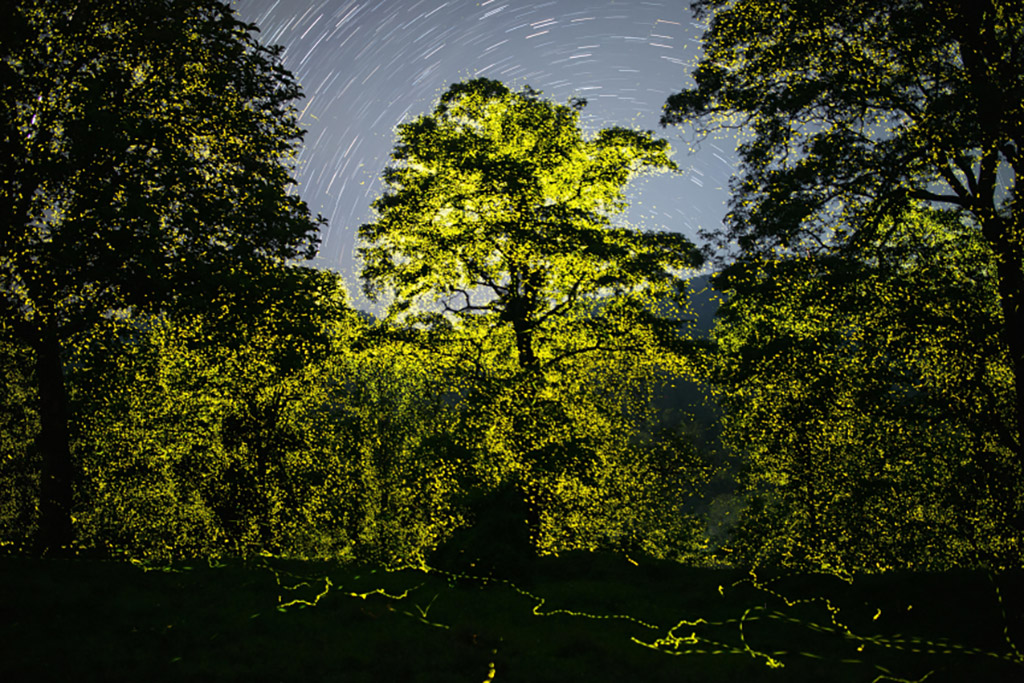
Sriram Murali won 3rd Place in the Professional competition, Wildlife & Nature, Sony World Photography Awards 2023. © Sriram Murali
Go round in circles
- From free
In his book The Accidental Creative: How to be Brilliant at a Moment’s Notice, Todd Henry talks about the importance of joining a group of fellow creatives. ‘Small group meetings can stoke your passion, help you stay aligned with what matters most, inspire and give you new ideas or directions for projects,’ he suggests. Meeting regularly with people who are willing to encourage you and offer constructive feedback is a great way to keep motivated – look up your local camera club, join an artist collective or start a creative circle of your own.
Go on trial
- Free
If you’re thinking about joining a society or organisation but you’d like to try it out before you make a commitment, look out for trial memberships. The Society of Photographers, for example, offers two months professional membership for free. Benefits of signing up to the Society include competitions, access to a mentoring programme, a forum and photographic webinars.
Also, plenty of software programs offer free trial periods including Zerene Stacker, Lightroom and Canva. Set a reminder on your calendar to tell you when the trial is up so you can make a decision ahead of the first payment.
Second-hand, hire, care, repair
Take care
- Price varies
According to Fjällräven, the more we use an item the more we develop a relationship with it, so that jacket that kept you warm on a mountain top might well hold special memories in its fibres. To keep gear fighting fit, you’ve got to treat it right. Fjällräven has some care and repair videos on its website and Paramo offers a repair service for its kit (and a discount on new items if your old gear can’t be repaired).
Billingham also offers a repair service for its camera bags. Spend a little time caring for your kit and it could save you pots of cash.
Protect to preserve
- Free
Protecting your kit from unforgiving environments will prolong its life and maintain its performance. When it comes to cameras and lenses the main threats are heat, dust, condensation, water, extreme cold, and human neglect. Regular camera care will help to keep everything in tip top condition.
Canon has a good basic care video on YouTube and there’s a great camera maintenance guide on the AP site too. If your gear has developed a serious problem, take it to a service centre approved by your camera or lens manufacturer.
Offer a second chance
- Price varies
Preowned camera equipment is big business. In recent years there’s been a resurgence in film (and darkroom) use, which has given analogue kit a second life, and the market for top-of-the-range digital cameras is still strong. What’s more, fast zoom lenses and primes are much in demand.
When buying preowned, condition is everything. Buy from a reputable retailer, find out about the returns policy and the length/extent of the guarantee and take it for a test drive. (AP recently published an article on the best second-hand full-frame camera bargains.)
Take the hire road
- From free, price varies (bear in mind you will need to pay a security deposit when borrowing equipment)
If you want to try a big-budget piece of kit before committing yourself or you just need something for a one-off job, why not consider hiring. Services like Hire a Camera will lend you everything from medium format cameras to top-of-the-range lenses and accessories including tripods, filters and memory cards.
Some manufacturers will lend you gear and offer you a money -off voucher if you go ahead and buy it. Fujifilm even lends cameras and lenses out for 48-hours free of charge so you can try before you buy.
Don’t despair, repair
- Quote £6 per item
I’ve spoken to enough camera manufacturers and retailers over the years to know that there are certain repairs you shouldn’t attempt at home (the rise in ‘how-to’ videos has led to a rush of people taking things apart and not being able to put them back together!) but if your camera starts misbehaving, don’t write it off.
There are plenty of camera repair shops and services available – Sendean Cameras, for example, uses 3D printing to make parts that are no longer available.
Cheap project ideas
Send some flowers
- Price of bouquets varies
During the first covid lockdown I ordered myself a bunch of flowers and challenged myself to photograph it in the 30 different ways during a 24-hour period. Setting strict boundaries really helped to keep me focused. I sketched a few ideas in a notebook, worked out which blooms might wilt first (freezing a few petals in an ice cube tray) and set to work. I really enjoyed raiding my props cupboard, looking at what worked and learning from what didn’t.
Pocket the difference
- £10 (or less)
Head out with £10 in your pocket and buy something (or go somewhere) to improve your photography. Whether you purchase a vintage prop, a gadget, a book, a train ticket or a coffee for an artist friend (listening is free after all), use the exercise to prove to yourself that creativity needn’t be costly. Some of my favourite haunts are charity shops and Oxfam bookshops.
Indulge yourself
- Free
Shoot a series of self-portraits, without appearing in any of the pictures. Think about the physical imprint you leave behind in your home: the indent on a bed, the hair in a brush, the leftover food on a plate, and use this as your inspiration. Next, take a series of portraits with your face (or part of your body) in the picture. For inspiration look at the work of Vivian Maier, Francesca Woodman and Jo Spence.
Adopt a bird’s-eye view
- Free
When I first started playing around with flat lay photography (shooting carefully arranged objects from above) it was just for fun, but as I worked away, I found it taught me so much about composition, balancing positive and negative space and using colour for maximum impact. It was also surprisingly calming!
Anything in large quantities can look good, but it helps to tell a story of some kind. Gathering berries, leaves or twigs from the same tree, for example, can say so a lot about a location. For inspiration, I look at paintings, graphic art and, of course, photographers and artists such as Mary Jo Hoffman and Philippa Stanton.
Set yourself a project
- Free
Creating a coherent set of pictures can be challenging, but it’s a great way to learn about sequencing, storytelling, editing and defining the purpose of your work. In 2021 I started a photo project entitled Plant Scars and it proved to be a great way of refining my skills.
It’s important to edit tightly – including an image just because you feel emotionally attached to it might not be enough if you plan to share your project with a wider audience. Each picture must earn its place.
Related content:
- Best photography competitions to enter
- Best photography exhibitions to see
- UKBFTOG take over Notting Hill Carnival!
- How to Photograph street style at Fashion Week
- Eurovision 2023: Behind the scenes with a Eurovision photographer
Follow AP on Facebook, Twitter, Instagram, YouTube and TikTok.









